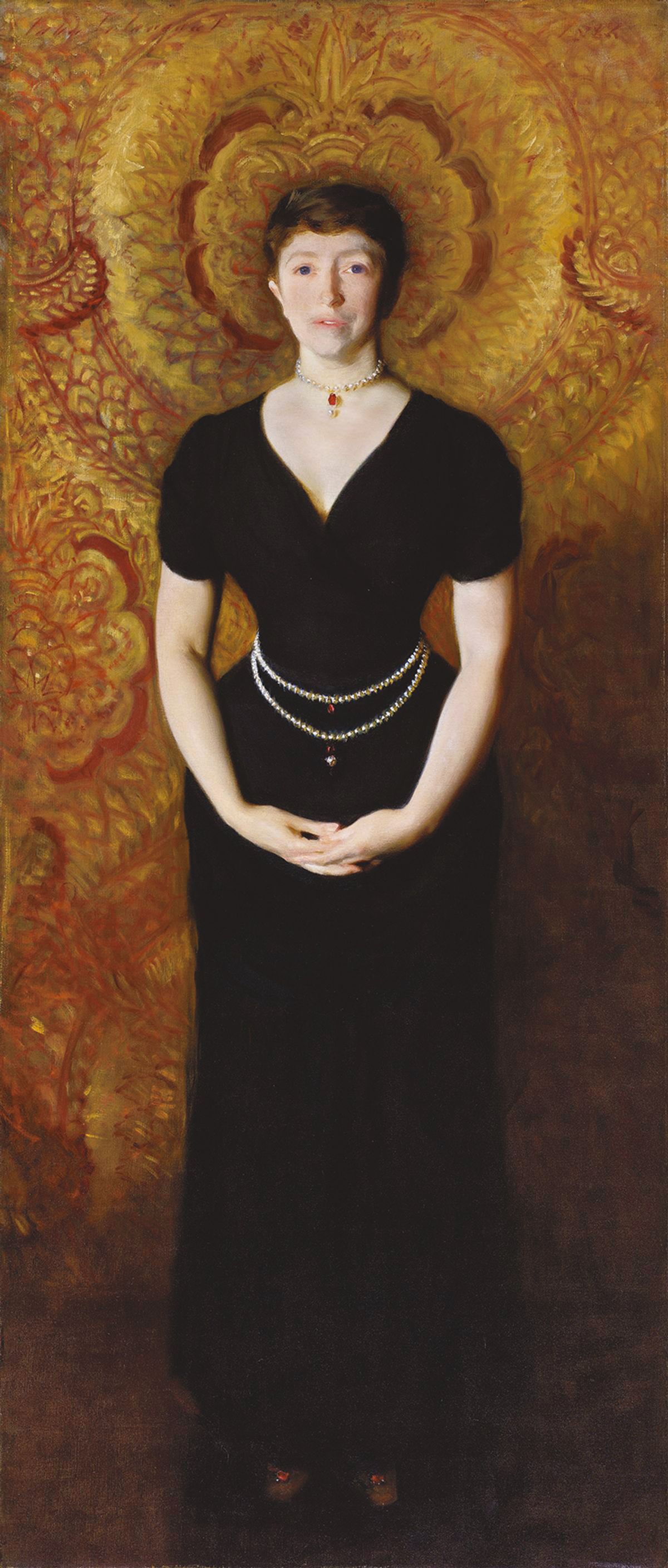During the 1880s, while John Lowell “Jack” Gardner Jr. and Isabella Stewart Gardner continued to travel and learn, their engagements with art and art collecting were run-of-the-mill for their class. Their earliest activities reflect an interest in contemporary French art typical of their Boston peers and recalling Isabella’s schooling and year abroad in Paris. Like many upper-class Bostonians, Gardner bought French works of the recent past and the present, above all landscapes by painters of the Barbizon School and their American followers. In 1868 she purchased An Old Barn under Snow by John La Farge, an American artist influenced by his French contemporaries. She followed it with works by Gustave Courbet, Narcisse Virgile Diaz de la Peña, William Morris Hunt and Charles-Émile Jacque, all Barbizon School painters or followers of them. Her purchases also included The Crusader by Eugène Delacroix, the French Romantic painter, in 1882, which remained her most expensive acquisition until 1892. Few of these choices set her apart; rather, they aligned her with the trustees of Boston’s Museum of Fine Arts, for whom her husband became treasurer, and other American collectors of the time like Henry Clay Frick.
Isabella’s dress was exceptional in what it revealed of her body... Jack seems to have asked his wife not to show the picture while he was still alive
Similarly, her decision to commission John Singer Sargent was not surprising. The two met in 1886, when he was already becoming the favoured portraitist of wealthy 19th-century American elites. Sargent created a unique image that married Isabella’s interests in East and West. To Henry James it recalled a Byzantine Madonna with a halo, but to a collector of Japanese art, it resembled Kannon, the goddess of mercy. Yet his 1888 canvas of her also stood out for the controversy it created. Isabella’s dress was exceptional in what it revealed of her body. She may have enjoyed the scandal, but Jack seems to have asked his wife not to show the portrait again publicly while he was alive. Isabella kept it in a gallery inaccessible to the public for the duration of her lifetime.
If the Gardners’ collection up to 1890 could hardly be described as pioneering, an event of 1891 transformed it. Her father, David Stewart, passed away and, as his only surviving child, Gardner inherited $2.75m—equivalent to about $78m today. Her and Jack’s combined fortune would amount to approximately $5m, which is around $142m today. Although a tremendous sum, which placed them in the top tier of wealth in the US, it was not nearly enough for a collector to challenge the titans of American industry—men like Andrew Carnegie, Henry Clay Frick and the banker J.P. Morgan—as Gardner was certainly aware. She once lamented, “Woe is me! Why am I not Morgan or Frick?” Nevertheless, the inheritance transformed the scope of her ambitions, offering her the prospect to realise, object by object, a collection reflecting her personal vision of the most important art and relics of the past. She was, in a sense, given licence to create a cultural phenomenon.
• Isabella Stewart Gardner: A Life, Nathaniel Silver and Diana Seave Greenwald, 112pp, £20 (hb). © 2022. Reprinted by permission of Princeton University Press


